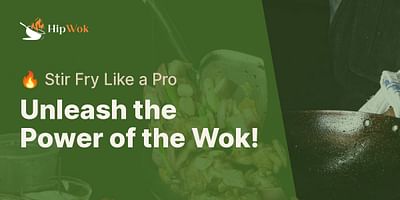Larry Pagac, a seasoned professional in the culinary scene, has dedicated over two decades of his life to mastering Asian cuisine. His profound expertise in the usage and versatility of the wok has been a pillar of his cooking style. Larry's enthusiasm for wok cooking has driven him to impart his wisdom and techniques through his articles.
When it comes to stir-frying, there's no better tool than a wok. As a seasoned wok master, I can confidently say that the wok is the secret weapon behind the delicious flavors and textures you find in Asian cuisine. Let me share with you why the wok is the preferred pan for stir-fry.
First and foremost, the shape of a wok is designed for optimal stir-frying. Its wide, sloping sides and deep, rounded bottom allow for quick and even heat distribution. This means that your ingredients cook evenly and retain their natural flavors and textures. The high heat of stir-frying also requires a pan that can handle it, and a wok's shape and material make it perfect for this purpose.
Wok Features and Their Benefits for Stir-Frying
| Wok Feature | Benefit for Stir-Frying | |
|---|---|---|
| Wide, sloping sides | Allows for quick and even heat distribution, ensuring ingredients cook evenly | 🔥 |
| Deep, rounded bottom | Helps retain the natural flavors and textures of the ingredients | 🍲 |
| High heat resistance | Can handle the high heat required for stir-frying without damaging the wok | 💥 |
Another reason why a wok is ideal for stir-frying is its versatility. You can use it for a wide range of cooking techniques, from stir-frying and deep-frying to steaming and braising. The curved shape of the wok allows you to toss and flip your ingredients effortlessly, ensuring that they cook evenly and quickly. This is especially important for stir-frying, where speed is key to preserving the vibrant colors and crispness of the vegetables.
The material of the wok also plays a crucial role in its performance. Traditional woks are made from carbon steel, which is lightweight, durable, and conducts heat efficiently. Carbon steel woks heat up quickly and can withstand high temperatures, making them perfect for stir-frying. They also develop a natural non-stick patina over time, which enhances the flavor and prevents sticking.
Now, let's talk about seasoning. Seasoning a wok is an essential step to ensure its longevity and non-stick properties. To season your wok, start by washing it with hot water and a soft sponge to remove any factory oils. Then, heat the wok over medium-high heat until it starts to smoke. Add a thin layer of oil and spread it evenly across the surface using a paper towel or a pair of tongs wrapped in a cloth. Let the oil heat until it starts to smoke again, then remove the wok from the heat and let it cool. This process creates a natural non-stick coating that improves with each use.
In conclusion, a wok is the preferred pan for stir-frying due to its shape, versatility, and material. Its unique design allows for quick and even heat distribution, while its curved sides make tossing and flipping ingredients a breeze. The carbon steel material conducts heat efficiently and develops a natural non-stick patina over time. So, if you're looking to elevate your stir-fry game and explore the world of Asian cuisine, investing in a good-quality wok is a must. Happy stir-frying!















